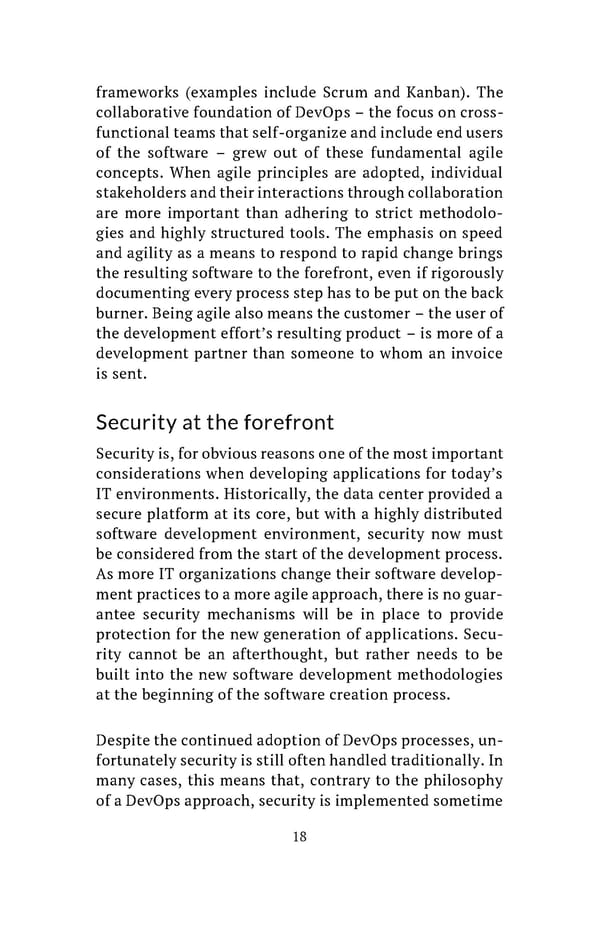frameworks (examples include Scrum and Kanban). The collaborative foundation of DevOps – the focus on cross- functional teams that self-organize and include end users of the software – grew out of these fundamental agile concepts. When agile principles are adopted, individual stakeholders and their interactions through collaboration are more important than adhering to strict methodolo- gies and highly structured tools. The emphasis on speed and agility as a means to respond to rapid change brings the resulting software to the forefront, even if rigorously documenting every process step has to be put on the back burner. Being agile also means the customer – the user of the development effort’s resulting product – is more of a development partner than someone to whom an invoice is sent. Security at the forefront Security is, for obvious reasons one of the most important considerations when developing applications for today’s IT environments. Historically, the data center provided a secure platform at its core, but with a highly distributed software development environment, security now must be considered from the start of the development process. As more IT organizations change their software develop- ment practices to a more agile approach, there is no guar- antee security mechanisms will be in place to provide protection for the new generation of applications. Secu- rity cannot be an afterthought, but rather needs to be built into the new software development methodologies at the beginning of the software creation process. Despite the continued adoption of DevOps processes, un- fortunately security is still often handled traditionally. In many cases, this means that, contrary to the philosophy of a DevOps approach, security is implemented sometime 18
 Building Cloud Native Apps Painlessly Page 20 Page 22
Building Cloud Native Apps Painlessly Page 20 Page 22